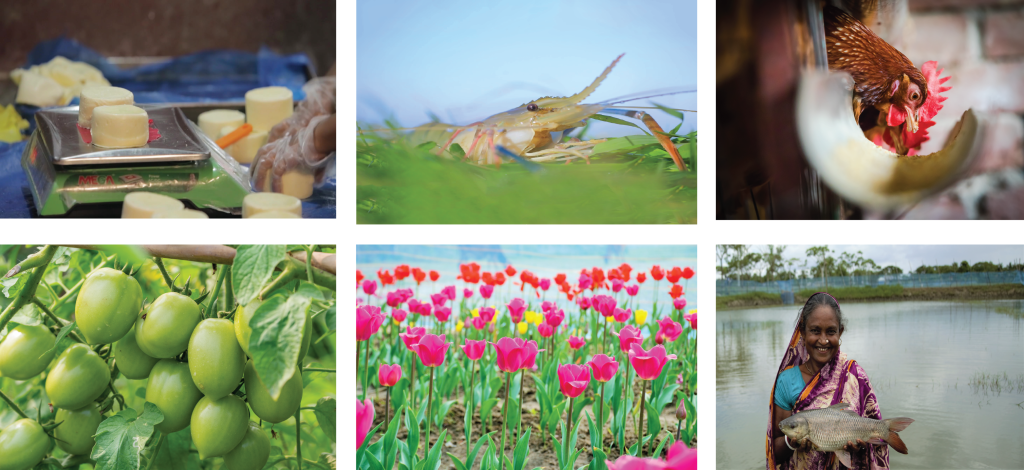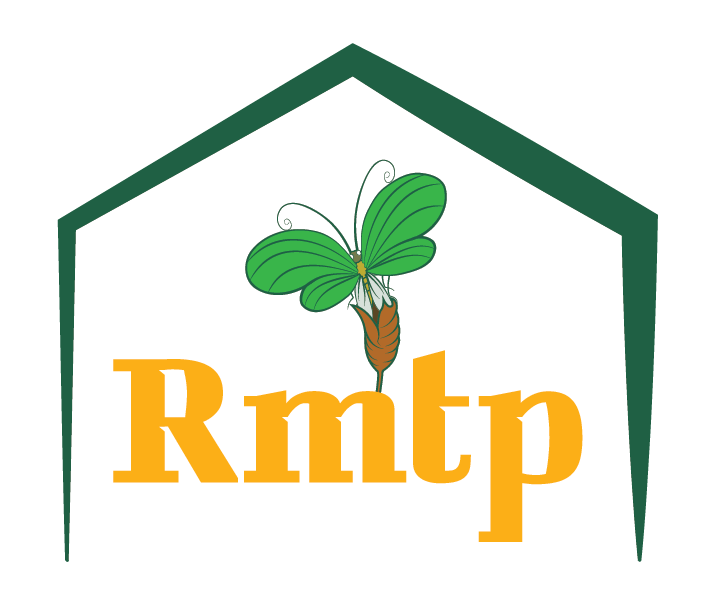This component is being enabled 445,000 microenterprises to sustainably expand their activities through adoption of efficient production methods, compliance with internationally recognized food safety and traceability standards, and strong market linkages. It is contribute to creating an enabling environment that promotes the growth of micro and small enterprises, and strengthens their linkages with the agribusinesses and other value chain actors. It has five sub-components: (i) organization of producers; (ii) provision of technical and business services (including GGAP compliance) to producers through private advisory services; (iii) integration of actors across selected value chains; (iv) strengthening of downstream agribusinesses (including GGAP and HACCP compliance as required); and (v) policy dialogue with Government. Also, nutrition, gender and youth, and environmental issues will be address through the value chain activities.

The project is being focused on a number of sub-sectors and commodities that have comparative advantage, market demand and growth potential; that are produced by small farmers and micro-entrepreneurs; that are aggregated in geographical clusters to ensure economies of scale and the possibility of private sector linkages; and that have potential to improve food and nutrition security for both producers and consumers. The value chains the project support fall into three broad categories:
Livestock Sector:
The livestock sector in Bangladesh has shown its strong presence with a fast-growing market for meat and dairy products. To provide its 165 million populations with sufficient, safe and nutritious food, the government has deployed great efforts in reforming the whole livestock sector, of which dairy and beef sub-sectors have been given particular emphasis. As an agriculture-based country, the majority of the rural households adopt a mixed farming system by cultivating crops and rearing livestock at the same time. Among the animals raised, cattle are considered as the most valuable asset for small-scale farmers in terms of its meat and milk producing functions. However, the bottlenecks existing in cattle rearing as well as along the entire downstream value chain largely constrain rural households to climb out of poverty. According to DLS, the livestock subsector provides 20% of the population with direct jobs and 45% with part-time jobs. This is particularly important for unemployed youth and women, as well as landless farmers, to lift themselves out of poverty.
IFAD, PKSF and DANIDA financed RMTP project is implementing eight value chain sub-projects on “ Market system development of safe meat and dairy products”, and eight value chain sub-projects on “ Market System development of safe poultry and poultry products” under livestock sector.
These sub-projects are expanding the technical, technical and marketing support for the development of various businesses in the livestock sub-sector. Through these sub-projects, it is providing various assistance to 290,000 farmers, entrepreneurs and market actors of 65 Upazilas of 22 districts. Certification, traceability etc. of the products produced are being ensured with the help of sub-projects. These value chain sub-projects are being implemented through 15 partners’ organization of PKSF.
Crop and Horticulture Sector:
Bangladesh is part of the Next Eleven group, which is identified as having a high potential of becoming one of the largest economies in the world in the 21st century. About 63% of Bangladesh’s 161.4-million populations live in rural areas and directly or indirectly depend on agriculture for their livelihood. However, the number of middle-income and affluent consumers will increase to 34 million by 2025. The gross per capita income of the country continues to grow, and reached $1,750 in 2018 from $440 in 2000.4 All these mean that the increase in demand for food, as well as a change in dietary preference for safe and nutritious food, will be inevitable in the coming years. Total agricultural land in the country is about 9.2 million hectares of which 60% is irrigated. Bangladesh is divided into 30 agro ecological zones based on soil quality and climate. More than 100-types of vegetables, 70 types of fruits, and 60 types of spices are produced in the country. Over the years, the performance of the agriculture sector has improved. About 100 types of fruits and vegetables are exported from Bangladesh to more than 43 countries.
PKSF, IFAD and DANIDA supported RMTP is implementing 24 value chain sub-projects for development of crops and horticulture sub-sector. The value chain sub-projects of various agricultural products of crops and horticulture sub-sector are “”Expansion and marketing of high value fruits and crops”, “Production and marketing of ecology-friendly safe vegetables” and “Expansion of tulip flower cultivation” in the northern part of the country”. Through 24 Value Chain sub-projects, 126,000 farmers and small entrepreneurs from 53 upazilas of 36 districts will get various technical trainings including Good Agricultural Practices, improved varieties of fruits, crops and vegetable Seeds & seedlings, technical assistance, branding, certification and market expansion support.
Fisheries and Aquaculture:
Bangladesh has a unique position in the sub-tropical region, within the delta of three great rivers, the Ganges, the Brahmaputra (and Jamuna) and the Meghna covering an area of 14.4 million ha. In view of this important river system, inland fisheries and aquaculture are prime contributors to food security and employment. A total of 19.5 million including 1.4 million women are engaged in fisheries sector (directly & indirectly) in Bangladesh. The fisheries sector is currently contributing -3.57 percent to the GDP and 26.50 percent to Agricultural GDP . Fish provide 60 percent of animal protein intake in Bangladesh (Source: Year book of Fisheries Statistics of Bangladesh 2020-21).
Aquaculture development has been strongly promoted by both the public and private sector in an attempt to meet the need of fish for food for the country’s population of approximately 156 million. Annual production reached the level of 4.62 million tons in 2020-21, with 85.26 percent originating from freshwater (both capture & culture) and 14.74 percent from marine water. The production is dominated by finfish (95 percent) mainly carps, which provide inexpensive fish for domestic consumption. Another 5 percent of the total production is farmed shrimp destined mostly for export market (Matshya Sankalon 2022).
In, the estimated value of imports of fish and fishery products was USD 27.5 million, with fishmeal as the main product imported (31 percent of the total value). In the fiscal year 2020-21, exports of fish and fishery products were estimated at 4088.96 crore taka ( 1.24% of total national export) by exporting 76591.69 MT, with shrimps and prawns as the main species exported (72 percent of the value). The per caput annual consumption of fish was estimated at 22.84 kg (62.58 gm/day/person) (BBS 2016), but this figure varies according to status, with poorer families and women and children consuming less fish per capita than the national average.
PKSF, IFAD and DANIDA supported RMTP project is implementing twenty value chain sub-projects on “Safe Fish & Fish products production and Marketing” under fisheries and aquaculture sector. Through these sub-projects, various activities is undertaken to increase the productivity and income of fish farmers, small entrepreneurs and other value chain actors. Under these sub-projects, 20 partner organizations (POs) will provide technical, technological product development and marketing support to 1,23,0000 fish producers, entrepreneurs, traders and other market actors involved in fisheries sectors in 73 upazilas of 22 districts for the next three years.


